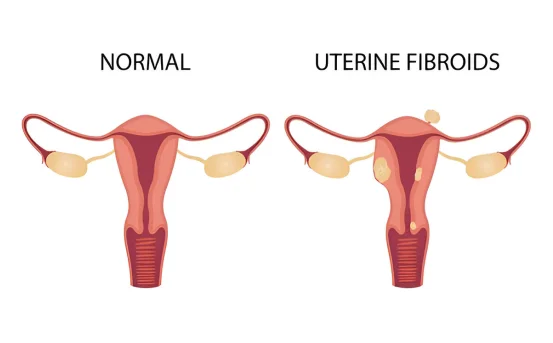Arm lift surgery, medically known as brachioplasty, is a cosmetic procedure designed to reshape and enhance the appearance of the upper arms by removing excess skin and fat. While the aesthetic goals are clear, a thorough diagnosis and pre-surgical evaluation are essential before undergoing the procedure. Understanding the diagnostic steps ensures patient safety, helps set realistic expectations, and determines your eligibility for surgery. However, before you jump into the decision to undergo an arm lift, it’s important to understand that this is not just a cosmetic treatment it is a surgical procedure that requires careful planning and preparation. And that preparation begins with a proper diagnosis.
Diagnosis for arm lift surgery goes beyond a quick physical exam. It is a multi-step process that helps determine whether you are a suitable candidate, ensures that the surgery will be safe for you, and lays the foundation for successful results. From evaluating your medical history to analyzing your skin elasticity, assessing your mental and emotional readiness, and conducting blood and imaging tests every diagnostic step plays a crucial role.
Why Diagnosis Matters Before Arm Lift Surgery?
Although arm lift surgery is generally safe and performed by certified plastic surgeons, it’s still a surgical intervention that requires proper evaluation. The diagnosis helps identify underlying medical conditions, assess the quality of skin and tissue, and evaluate overall health.
Skipping or overlooking the diagnosis stage can increase the risk of complications, poor cosmetic results, or even surgical failure. That’s why reputable surgeons always begin the arm lift journey with a detailed diagnosis and consultation.
Initial Consultation and Medical History Review
The diagnostic process starts with a comprehensive consultation. During this session, your surgeon or plastic surgery team will discuss :-
-
Your goals and expectations for the arm lift
-
Previous medical history, including chronic illnesses
-
History of weight fluctuations or weight loss surgery
-
Any medications or supplements you’re taking
-
History of smoking, alcohol, or drug use
-
Allergies, especially to anesthesia
This step is crucial to identify any contraindications for surgery such as uncontrolled diabetes, poor wound healing, or cardiovascular issues. If you have had previous surgeries, especially on the arms, it’s essential to disclose that as well.
Physical Examination of the Upper Arms
A detailed physical examination of the arms is the next step in diagnosis. The plastic surgeon will evaluate :-
-
Skin elasticity and tone
-
Presence of excess fat or sagging skin
-
Muscle laxity in the upper arms
-
Distribution of fat and tissue
-
Stretch marks or scars from past trauma or surgery
The surgeon may pinch the skin to test elasticity and use measuring tape to assess the circumference and symmetry of both arms. This step helps decide the type of arm lift surgery suitable for you – whether a mini arm lift, standard brachioplasty, or an extended arm lift.
Body Mass Index (BMI) and Weight Stability Assessment
A healthy and stable weight is critical for optimal arm lift results. During diagnosis, your Body Mass Index (BMI) will be calculated to determine if you’re within a safe range for surgery.
-
Ideal BMI :- Usually under 30
-
Stable weight :- Patients are advised to maintain a stable weight for at least 6 months before surgery
Excess body fat can increase surgical risks and reduce the longevity of results. If you are overweight or in the process of losing weight, your surgeon may recommend postponing surgery until your weight stabilizes.
Lab Tests and Blood Work
Several lab tests may be ordered to evaluate your general health and ability to undergo surgery. These include:
-
Complete Blood Count (CBC) :- Detects anemia or infection
-
Blood clotting tests (PT, APTT) :- To assess bleeding risk
-
Blood glucose and HbA1c levels :- Especially for diabetic patients
-
Liver and kidney function tests
-
Thyroid function tests
In some cases, electrolyte levels and cardiac markers may be tested depending on age and medical history. These diagnostic tests help minimize surgical risks and ensure you’re in good health for anesthesia and recovery.
Imaging and Skin Analysis (Optional)
Though not always required, imaging may be used for more complex cases. Techniques such as:
-
Ultrasound :- to evaluate deeper tissues
-
3D body scanning :- for surgical planning and before-after comparison
-
Skin scanner :- to assess elasticity and hydration levels
These advanced tools help the surgeon plan precise incisions and achieve optimal symmetry and contour.
Psychological Evaluation and Readiness
Mental health and emotional readiness are essential for a successful outcome. During the diagnosis, your surgeon may:
-
Evaluate your motivations for surgery
-
Screen for body dysmorphic disorder (BDD)
-
Ensure you have realistic expectations
-
Discuss the recovery process and downtime
In some cases, a mental health professional may be involved, especially if the patient has a history of anxiety, depression, or trauma. Remember, cosmetic surgery can enhance self-esteem, but it’s not a cure for emotional distress.
Allergy Testing (If Required)
If you have a history of allergies to medications, latex, or anesthesia, your doctor may conduct:
-
Patch tests
-
Skin prick tests
-
Blood allergy panels
These tests are vital to prevent intraoperative allergic reactions, which can be dangerous and delay recovery.
Smoking and Lifestyle Assessment
Smoking significantly increases the risk of surgical complications, including poor wound healing, infections, and scarring. During diagnosis, your doctor will:
-
Ask about nicotine use, including cigarettes, vapes, or nicotine patches
-
Recommend stopping smoking at least 4 weeks before and after the procedure
Your lifestyle habits such as exercise routine, hydration, diet, and sleep hygiene also play a role in surgical recovery and outcomes.
Who is NOT a Candidate for Arm Lift Surgery?
Based on diagnostic evaluations, some individuals may be advised against arm lift surgery. You may not be eligible if you have :-
-
Uncontrolled diabetes
-
Bleeding disorders
-
Autoimmune diseases
-
Severe obesity (BMI > 35)
-
History of keloids or poor scarring
-
Ongoing infections or skin conditions
-
Unrealistic expectations about the results
In such cases, your surgeon may suggest non-surgical alternatives like laser skin tightening or refer you for additional treatment before reconsidering surgery.
What Happens After the Diagnosis?
Once your diagnostic evaluation is complete and you’re deemed a suitable candidate, your surgeon will :-
-
Develop a personalized surgical plan
-
Explain the type of arm lift suitable for your arm structure
-
Discuss pre-operative instructions
-
Review costs, risks, and recovery timeline
-
Schedule the surgery date and provide consent forms
Conclusion
A successful arm lift surgery begins with a comprehensive diagnostic process. From physical assessment to lab tests and psychological readiness, each step plays a crucial role in ensuring safety and satisfaction.
If you’re planning to undergo an arm lift, make sure you choose a qualified plastic surgeon who emphasizes a proper diagnosis. This approach will not only reduce risks but also improve your chances of achieving smooth, youthful-looking arms with long-lasting results.























